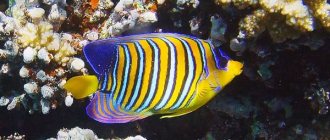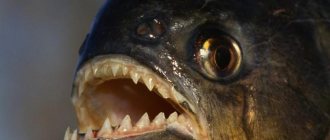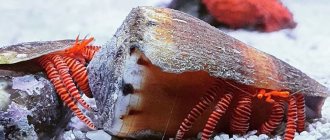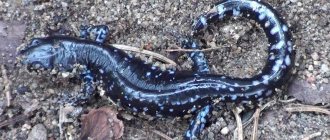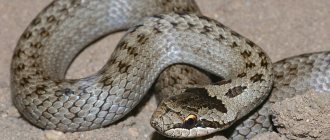Content
- 1 Description
- 2 Conditions of detention
- 3 Behavior
- 4 Food
- 5 Reproduction
Source: www.aquaportail.com
Source: www.biolib.cz
- Other names: Rhinecanth Picasso, Triggerfish Picasso real, Rhinecanthus assasi, Picasso triggerfish, Arabian picassofish.
- Origin: Indian Ocean.
- Size: up to 30 cm.
- Temperature: 22-26 °C.
- Water parameters: pH 8.1–8.4, dkH 8–12.
- Behavior: aggressive.
- Content difficulty: medium.
Lifestyle of wayward triggerfish
In the underwater “kingdom” they occupy territories near coral reefs and in shallows. True, there are separate subspecies that live at very great depths.
Triggerfish have a complex character; they are not very good-natured fish. Maybe it is this quality that makes them avoid living in packs.
Triggerfish can make very funny sounds that vaguely resemble grunting. Fish do this with the help of their swim bladder.
A triggerfish eats the fouling that covered the wreck of a sunken ship.
Description
Picasso's triggerfish has a strange, unusual coloring, truly reminiscent of the great artist. Its body is painted in light yellow-brown colors, against which a vertical black stripe stands out in contrast, going down from the eyes to the base of the pectoral fins. The eyes are connected by three black stripes on a bright blue background. Just above the beak-like mouth there is also a dark stripe that connects with the vertical stripes. The area around the first dorsal fin with a hard lucos is highlighted in bright yellow. The fins are transparent.
Many representatives of this species can be found in the Red Sea, the Gulf of Oman and the Persian Gulf. This fish reaches a length of about 30 cm. Like most triggerfish, it will require a large aquarium and a minimum number of neighbors, but this is more than compensated by the pleasure with which you can watch its games and study of the aquarium. Picasso's triggerfish is sometimes compared in intelligence to a dog - it quickly begins to recognize its owner and almost eats from his hand. Capable of making grunting sounds through contractions of the swim bladder.
Picasso spiny triggerfish in an aquarium
Synonymous names: triggerfish, triggerfish Picasso, spiny triggerfish, spiny triggerfish, red-toothed triggerfish, red-toothed triggerfish, Arabian triggerfish, Arabian triggerfish, triggerfish, humu-humu.
Family: Triggerhorns (Balistidae)
Habitat: Indian-Pacific region. From the south of the Red Sea to South Africa, Hawaiian Islands, Tuamotu Islands, Lord Howe Islands, Japan. Eastern Atlantic: from Senegal to South Africa.
Habitat: Warm, shallow waters, inside and outside reefs, where there are many cracks in the rocks that triggerfish explore for food.
Description: The body is elongated, high, flattened laterally, the back is oval, the head is triangular in profile, elongated with strong jaws. The first dorsal fin is small and supported by a spiny ray. Truncated caudal fin, rounded in the middle.
Color: back olive green, belly white. A black stripe with blue edges runs through the eyes and gill cover. Three black lines mark the caudal peduncle and one extends from the base of the pectoral fins to the mouth. The anus is marked with an orange spot.
Size: Triggerfish grow up to 30 cm in length, but in small aquariums (less than 600 liters) they “tighten up” and do not grow more than 20 cm in length
Content difficulty: easy.
Life expectancy: up to 10 years.
Aquarium: Dimensions: from 300 l. — for juveniles, from 800 liters. - for adult fish. Soil: sand. Water: pH 8.1-8.4°; dH 8-12°, filtration, aeration, weekly replacement of 3-7% of the water volume, depending on the volume of the aquarium.
Salinity: 1.021-1.025 Temperature: 24-28° C. Lighting: bright.
Feeding: Diet: combined meat feed, small fish, shellfish, chopped shrimp, squid. Frozen food, including seaweed, as well as fortified food. Triggerfish should be fed at least 3 times a day.
Behavior: Character: moderately aggressive (attack and eat small invertebrates, excluding large stinging cnidarians (carpet anemones) (genus Stichodactyla).
Water zone: all layers of water.
Can be kept with: Young triggerfish can be kept with almost any aquarium marine fish. Adult fish should be kept with conspecifics, other fish of equal or larger size. (For example, with hogfish or surgeonfish. Cannot be kept with: more aggressive species, peaceful species, smaller fish.
Peculiarities of behavior: with age they become more aggressive and pugnacious, they can bite the wires of aquarium equipment, oxygen hoses, heating tubes, etc. They can change the aquarium landscape to suit their taste.
Compatibility with corals: Not compatible (eat invertebrates, damage corals)
Fish farming: Sexual differences: difficult to distinguish, but males may be larger than females of the same age.
Cases of breeding in aquarium conditions: not recorded. In nature, spawning occurs with the participation of one male and several females; after spawning, the females, together with the male, guard the eggs, driving away any enemies, regardless of their size.
Diseases: Predisposition to diseases: none.
Prevention: proper care and feeding.
Features: Triggerfish are the hardiest among all marine fish. Territorial fish. In nature, triggerfish feed on algae, detritus, mollusks, crustaceans, worms, sea urchins, fish and corals. The Picasso triggerfish is perhaps the most harmless species of its genus, but this does not mean that it is not aggressive.
Often, triggerfish can establish a tyrannical system in an aquarium. Basically, it is recommended to house Picasso triggerfish one fish at a time in one aquarium; several fish or more can live peacefully only in a really large aquarium. Triggerfish have very sharp teeth, so to avoid being bitten, it is recommended to use Kevlar gloves when working in an aquarium.
The larger the aquarium you choose to house your triggerfish, the more peaceful they will live. In nature, these fish usually live alone, although sometimes they gather in large groups.
One of the favorite foods of spinorgs is diadem sea urchins! Triggerfish blow them away with a strong stream of water from their mouths and, while they sink to the bottom, open them with one bite into the soft and spineless mouth. They have one more feature - the first dorsal fin is equipped with a spine. At night or in times of danger, the fish squeezes head first into narrow cracks in the reefs, and gets wedged there with its large spine, and it is no longer possible to pull it out of the crack. Triggerfish can also attack scuba divers, protecting their eggs.
Conditions of detention
An adult will require an aquarium with a volume of about 400 liters, filled with salt water (salinity level about 1.020-1.025). As an inhabitant of tropical seas, the triggerfish needs to create appropriate conditions: a temperature of about 26 ° C, pH in the range of 8.1-8.4, water hardness from 8 to 12 °. At the bottom you need to place various stones, driftwood and other landscape elements. Picasso's triggerfish will most likely change the location of the stones. If there are plants, they must be carefully fixed in the ground. Sand is best suited as a substrate.
Lifespan and reproduction
Male triggerfish occupy separate territories, but several females can be found in these territories. Fish eggs are laid in the late evening or at night, often during the new moon, when lighting is minimal.
The eggs are laid in small sand pits, which are prepared independently; the egg laying has a small adhesive substance. The protection of their fry is very strict, but as soon as the babies appear, the parents let them swim on their own. The average lifespan of triggerfish is 10 years.
Behavior
The triggerfish Picasso behaves in a typical aggressive manner characteristic of most triggerfish. However, it can be kept together with other members of the same genus, provided that there is enough free space in the aquarium and that all individuals are placed in the aquarium at the same time. You can also keep young animals together; their level of aggression is significantly lower. It must be borne in mind that they grow up quite quickly. It can also be kept with other species of the same size and temperament; smaller fish may become prey for this triggerfish.
Features of the species and habitat
The triggerfish belongs to the family of marine fish of the pufferfish class and is related to unicorns and boxfishes. The fish have an unusual body structure, which is up to a meter long, the fry is thirteen centimeters long.
Their body is distinguished by its height and flattening on the sides. A pattern of large spots or stripes shimmers in the water and pleases the eyes of others. The colors are varied, they can be found in black, blue, yellow, silver and white colors; in some types the colors are beautifully combined.
The Red-toothed Triggerfish, with its deep blue bloom, looks very elegant. The head is elongated, narrowing towards the lips. Plump lips and big teeth in two rows. The first row has 8 teeth, the bottom 6. On the top of the head there are large eyes, which do not depend on each other when rotating.
In the photo there is a red-toothed triggerfish fish
The structure of the dorsal fin gives the fish its name. The fin has spiny rays and sharp spines, which the fish uses to protect itself in emergency situations. The triggerfish moves with the help of pectoral fins; they are located high and are of medium size. The tail fin is round, some fish have a lyre-shaped tail with extension threads.
The corner-tailed triggerfish is more active in movement. The spiny spines are hidden in special pockets in the ventral fins. In dangerous situations, fish may enter the crevice. An interesting fact is that triggerfish make sounds similar to snorting and grunting.
Triggerfish fish
They do this with the help of a swim bladder. The peculiarity of triggerfish is the absence of sexual dimorphism. Both males and females have the same color and structure. An equally amazing property is that the scales of the fish are very large and ossified, they look like plates that overlap each other and create a solid frame, similar to the shell of a box.
When they die, the soft tissues decompose, but the frame remains and retains its shape for a long period of time. The triggerfish's habitat is tropical and subtropical zones of the Pacific, Atlantic and Indian oceans. Gray triggerfish can sometimes be found in the Mediterranean Sea and the Black Sea of Ireland and Argentina.
The photo shows a gray triggerfish
Most often, fish are located near coral reefs in shallow waters. Only one species lives far from the coast - the ocean blue-spotted triggerfish. The nature of this vila is quite strict; the fish stay alone and have a permanent habitat, which protects them from their relatives.
Feeding
Titanium or bluefin ballistode
Possessing strong teeth, triggerfish specialize mainly in solid food; they easily chew corals, crabs, sea urchins, crustaceans and various mollusks. Moreover, the fish do not swallow their food whole, but bite off little by little. But not all species are carnivorous; the red-toothed triggerfish feeds on plankton, while the Picasso prefers algae. In aquarium conditions, fish are fed with mixed meat food, chopped shrimp, squid, mussels, fish and crabs. Replenishment with vitamins and seaweed is also necessary.
After acclimatization, the clown triggerfish can eat live, frozen and plant food, and seaweed tablets. Fish eat bloodworms, brine shrimp, ascidians, lettuce, and spinach. Feeding is done 3 times a day; overfeeding should not be allowed.
Return to content
Compatibility
Grey
In natural conditions, triggerfish live alone, meeting with relatives only during spawning periods. After successful acclimatization in captivity, the fish will become active and hardy. In a common aquarium with these fish, you should not place invertebrates, which they will certainly eat, as well as aggressive fish that are smaller than them. Triggerfish often conflict with their relatives, so only one individual can be placed in one aquarium. These fish have good compatibility with rock perches, angelfish, surgeonfish, and groupers.
Return to content
What do triggerfish family fish eat?
The presence of strong teeth also determines the diet of these fish: they all prefer solid animal food. They eat sea urchins, crabs, corals, and various shellfish. Certain species of triggerfish eat exclusively plant foods, these are the orange-striped triggerfish and the spiny rhinecanth.
A pair of large-spotted triggerfish (Balistoides conspicillum) guarding their eggs
Varieties
Picasso or aculeata
All types of triggerfish are beautiful and original in their own way; their colors are dominated by black and white, grey, blue and orange. Some colorful varieties are especially attractive, such as the clown triggerfish and the picasso triggerfish.
The clown triggerfish, also known as the large-spotted triggerfish, is the most attractive and colorful triggerfish. The fish has a dark body background with large oval spots of white and yellow. There is a white stripe under the eyes, the lips are orange with a white border. The triggerfish Picasso or Aculeatus has an original geometric body pattern, its back is green-olive, and its belly is almost white. The eyes and gill cover are crossed by a black-blue stripe, and the mouth is yellow.
The red-toothed triggerfish also has another name - the black triggerfish; it has a dark blue color and a mouth with red teeth. The tail resembles a two-pronged fork with sharp ends. The titanium triggerfish or bluefin ballistode is the largest representative of these fish; in nature it can reach up to 1 meter. The fish has stable immunity and adapts well to various living conditions. The owner of the most modest color is the gray triggerfish of gray-yellow or greenish shades with large blurry dark spots. The gray triggerfish is not often found in aquariums due to its dull coloring and large size, reaching up to 60 cm.
Return to content
Breeding
In captivity, fish do not reproduce. In nature, triggerfish lay eggs in nest-pits and protect this territory not only from medium-sized fish, but also by attacking larger and more serious predators.
Triggerfish are a fairly common marine aquarium fish due to their unusual colors and interesting behavior. In favorable conditions, fish can live for a very long time, since they are resistant to various diseases and have good endurance.
Return to content

